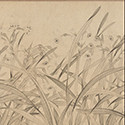|
|
| Show All 17 Results (Text Only) |
|
| Ancient Vietnam: Ports of Call |
|
| Asia Society
|
A video showing the objects in “Arts of Ancient Viet Nam: From River Plain to Open Sea,” narrated by the curator. "This exhibition brings together more than one hundred objects from ten museums across the diverse geographic expanse that is Viet Nam to illuminate the country’s long history of cultural and economic exchange... As long as two thousand years ago, a maritime trade route extended from southern China to Roman-controlled ports in the Persian Gulf and Red Sea, via ports in what is now northern Vietnam, Southeast Asia, Sri Lanka, India, Pakistan and Iran. As a result of this exchange, Vietnam developed unique art objects with connections to China, India, and other cultures of Southeast Asia… The exhibition focuses on four areas and ports of call: 1) Early Cultures: Dong Son and Sa Huynh; 2) Fu Nan in the Mekong River Delta; 3) Coastal Kingdoms of Champa; 4) Trade and Exchange in Hoi An.” This was a trade in luxury goods, where merchants had to follow the monsoon winds sailing east and west. See also: Arts of Ancient Viet Nam: From River Plain to Open Sea
Go to Museum Resource: https://asiasociety.org/video/ancient-viet-nam-ports-call-complete | |
|
|
| Art of the Samurai: Japanese Arms and Armor, 1156–1868 |
|
| The Metropolitan Museum of Art
|
Online presentation of a 2009-2010 exhibition, the "first comprehensive exhibition devoted to the arts of the samurai" and "the first exhibition ever devoted to the subject of Japanese arms and armor conservation." With images of 27 objects.
Go to Museum Resource: https://www.metmuseum.org/exhibitions/listings/2009/art-of-the-samurai/photo-ga... | |
|
|
| Art of the Silk Road |
|
| University of Washington
|
Online exhibit "organized as part of Silk Road Seattle, a collaborative public education project exploring cultural interaction across Eurasia from the first century BCE to the sixteenth century CE." With text and images organized into four categories: 1) Cultures (with a timeline from 400 BCE to 1600 CE); 2) Religions (Buddhism, Zoroastrianism, Nestorianismism, Islam, Manichaeism); 3) Trade (text about trade routes, horses and camels, silk); 4) Intercultural Exchange.
Go to Museum Resource: http://depts.washington.edu/silkroad/exhibit/index.shtml | |
|
|
| The Arts of Thailand |
|
| Victoria and Albert Museum
|
An introduction to the V&A's new Arts of Thailand exhibit, which "features the museum's finest Thai Buddhist sculptures in bronze and stone spanning the period from the 7th to the 19th centuries, together with works of decorative art in a wide variety of media associated both with the Thai court and with monasteries." Thirty-eight objects are featured online; all objects have descriptions.
Go to Museum Resource: http://www.vam.ac.uk/content/articles/t/the-arts-of-thailand/ | |
|
|
| Cultivated Landscapes: Reflections of Nature in Chinese Painting |
|
| The Metropolitan Museum of Art
|
Online presentation of a 2002-2003 exhibition that encompasses "landscapes and garden scenes dating from the Five Dynasties period (907–960) to the late twentieth century" and explores the "manifold uses of natural imagery in Chinese painting as a reflection of human beliefs and emotions." With images of 8 related artworks. See also the exhibition publication.
Go to Museum Resource: https://www.metmuseum.org/exhibitions/listings/2002/cultivated-landscapes | |
|
|
|
| Devotion in South India: Chola Bronzes |
|
| Asia Society
|
"The tradition of cast-bronze sculptures in the Tamil-speaking region of south India became widely prevalent under the imperial rule of the Cholas, who rose to prominence in the late 9th century at Tanjavur (Tanjore) in the delta of the Kaveri River. These sculptures, mainly created from the 9th through the 13th century, are of the highest quality. Reflecting a new approach to the subject matter, this exhibition considers cast-bronze sculptures in relation to the Hindu tradition of bhakti (devotion), which emphasizes intense and intimate devotion to a personal god. The depiction of itinerant poet-saints among Chola bronzes reflects the importance of these figures in promoting bhakti and the growth of Hindu temples."
Go to Museum Resource: http://sites.asiasociety.org/chola/ | |
|
|
| Gilded Splendor: Treasures of China's Liao Empire (907-1125) |
|
| Asia Society
|
This excellent interactive website explores the complex cultural and religious legacy of the Khitan and their reign over China during the Liao Dynasty (907-1125). Features an extensive image gallery of objects (organized into the following topics: 1) Nomadic Heritage; 2) Chinese Tomb Tradition; 3) Luxuries and Necessities; 4) Religious Life); an interactive tour of two Liao tombs; plus an interactive map of recently excavated Liao sites in Inner Mongolia (with images); two additional historic maps; and a timeline.
Go to Museum Resource: http://sites.asiasociety.org/arts/liao/ | |
|
|
|
| Show All 17 Results (Text Only) |









